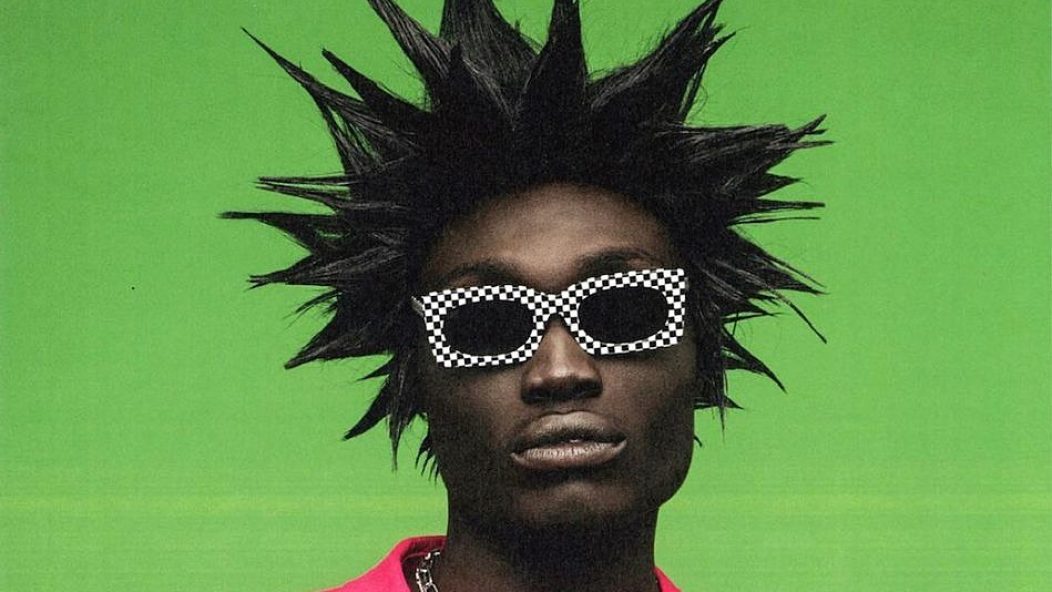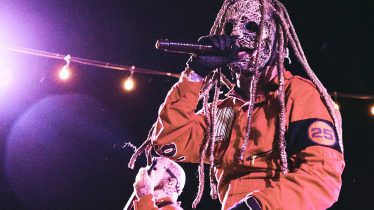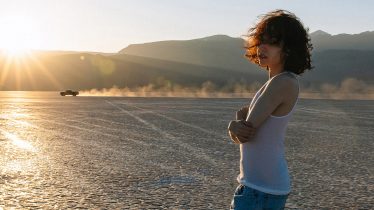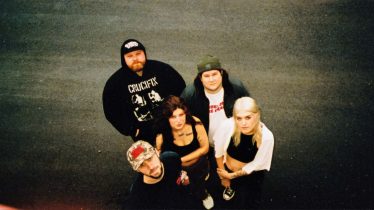
Chris Mart shares how creating eyewear gave him a new sense of freedom
Chris Mart has been around streetwear culture for well over a decade, but after some minor hiccups at previous companies, he went his own way, creating his own lane—this time centered around designer eyewear and sunglasses. In many ways, Mart manifested his career from the beginning, whether he was showing up at the door of the hugely successful clothing brand Pleasures with his sunglass prototypes, leaving them with no choice but to say yes to a collaboration, or taking the mistakes he made or experienced and turning them into tangible, refined pieces of eyewear for the masses. The result is AKILA, a forward-thinking eyewear company that’s never afraid to work with other artistic communities to disrupt the sunglasses industry as a whole.
Read more: Incubus’ Brandon Boyd takes you inside upcoming ‘Morning View’ stream
AKILA is a mission-driven company that wants to break down the barriers of collaboration, refusing to take no as an answer and creating fresh, groundbreaking designs in a market that desperately needed innovation and deviation from old-school practices. In this interview, Mart lays out the beginnings of AKILA, the compelling collaborations with the artistic communities he has facilitated, how he stays positive and forward-thinking and what it takes to ensure every dream he has can one day become reality.
Talk to me about where you started and your background, from working in streetwear and fashion to then working with eyewear.
I did apparel clothing/streetwear for 10 years. I learned a lot. The company I was working for was in the process of getting bought out by the guy that owned a sunglasses brand, and we didn’t work out. When I left, I wanted to start a company, so I hit this sunglasses mogul to see if he wanted to start a hat company. He didn’t, but he was like, “Come to Spain.” That’s all he said, so I just flew to Spain with no expectations. The sunglasses company is called Hawkers. It was fast-growing, very young, very cool. Probably 200 people. I didn’t speak Spanish. I had made one pair of sunglasses in the past. [I] really didn’t know anything else about the industry and was just thrown into the mix. The owner offered me a job as the creative director of a 30-person design team there.
I worked in the industry for a couple of years, learned all about it from an outsider’s perspective. I thought there was a lot of opportunity. Nobody had really brought the streetwear perspective to the industry that I was trying to do there. I loved it, [but] I ended up not being able to get a visa. I was back and forth for two years trying to manage a team like that living in L.A. while they’re all in Spain.
Read more: Pleasures founder Alex James shares brand mission & musical influences
I was at the point where I was like, “I’m not coming back unless you get a visa for me.” The owner that had brought me down, he basically got booted from his own company. I was living at his house in Beverly Hills—I talked to him and pulled him aside and said, “I want to be making sunglasses, but I’m not going back without a visa. So, I want to start my own thing, and I want to do it and do it right. I want to make the best sunglasses you can possibly make quality-wise and offer them at the best price point that we can afford.” He was all for it and gave me the go-ahead.
From there, I have a lot of friends in streetwear. Pleasures were the first brand I reached out to about collaborating. I already knew what sunglasses they wanted to make, so I just sampled something I thought they would like and showed up at their doorstep. I made it really hard to say no. From there, [I] made a lot of mistakes. Every season, I think everything improves, and I think my biggest strength and my biggest weakness at the beginning was not knowing what I was doing. But I’m not afraid to try new things, not afraid to make mistakes. There were some hurdles, but overall, I think that’s why the company’s been successful—because we’re not going to listen to the industry people that tell me not to do something.
You do collaborations with brands that aren’t known to the world in a major way, but you start these conversations really early. It’s innovative and different because most people are like, “Let’s find the biggest possible thing and make it.” No shade, pun intended, to that, but I think the way you operate is you find things that are really exciting to you, and then you do collaborations.
The first rule for collabs is that I never turn down a meeting, no matter how ridiculous. Really the idea now is to let the best ideas naturally rise to the top, and for me, I would much rather introduce our fans to somebody that they don’t know and do something that I think is cool than to keep hitting them over the head with the same stuff that they expect. It’s hard for me to say no to people. We’re at the point now where it is what it is. If you want to get something in, it’s got to be better than these hungry kids that have crazy ideas. That’s definitely where my head’s at.
It’s about finding new talent that’s out there and then not having these preconceived notions about brands, being able to give them the opportunity to have a fresh perspective in eyewear and make it easy for them to make crazy sunglasses. It’s always surprising to see what works, too. Sometimes the crazy-small brand that nobody knows is the one that has the most devoted [fans].
Real quick, name some collabs that you’ve done that you would shout out.
Two that we just did that I’m really excited about were actually more of licensing deals and coming up with an idea and approaching the licensing company with a totally different thing. It’s cool because it gives me the freedom to come up with it. That’s another thing: A lot of these collabs are me coming up with ideas and approaching them and making it hard to say no. Grateful Dead, which is crazy to me that we were even able to get that, and then Patrick Nagel and his Nagel glasses were one of the first ideas I had when I started the company. It’s been three years, and it took that long to figure it out and come out with it.
I think the Soto stuff was amazing.
That was something that evolved naturally. [Manuela Soto Sosa] is just a good friend. We worked with her when she was with Sang Bleu—she helped launch that tattoo studio. I had just met Maxime [Plescia-Büchi, Sang Bleu founder] in London, and it was crazy timing, and she has just become a really good friend. I was blown away by her fans. Obviously, she’s an amazing person and one of my favorite people. Lucky for us, she’s got a crazy devoted following, so she’s a great partner. I don’t think it’s something that people would expect from other collabs, but [it’s] one of my favorites.
You are very positive, and you’re like, “Take chances. Don’t worry about this.” Where do you think that positivity comes from?
I don’t know where it comes from, but that’s why I started my own business. I’m probably not a good businessman in the traditional sense, but I wanted something where I could work with people that I respect and think are doing cool things. I like to surround myself with creative people that are positive. Life is too short. It’s not about money. I could stress myself out and try to grow this huge business and get a mansion in the Hills and drive Ferraris. That’s cool if that’s what you’re into, but for me, it’s more about [forming] these relationships.
The last thing I wanted to talk about is the imagery. Your imagery isn’t from an outside agency or someone else who you’re hitting up. The imagery that you create is super directional, and it feels like different campaigns. Where do you find inspiration for that stuff?
It’s all over the place, but it comes down to what I like. I surround myself with people that I think are doing cool things. We have all kinds of creatives because the images become such a thing. We have all these people hit us, and it’s just become a thing and a place for people to come. It’s an easy thing to do a photo shoot with glasses. It evolved naturally because I know what I like, and I surround myself with people that are creating cool things. I think if I wasn’t doing sunglasses, I would probably be doing some creative agency, like creating content or branding. I love doing it. I’m a very visual person, so I’m hopefully going to be able to devote more time to it as well now.
This interview appeared in issue 398, available here.








